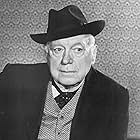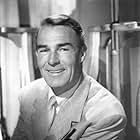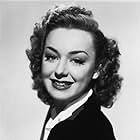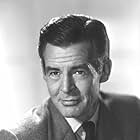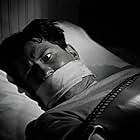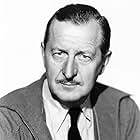VALUTAZIONE IMDb
6,0/10
909
LA TUA VALUTAZIONE
In una base di addestramento per bombardieri di alta quota dell'aeronautica americana, le vicende militari ed umane di ufficiali, cadetti e personale femminile. Poi la guerra.In una base di addestramento per bombardieri di alta quota dell'aeronautica americana, le vicende militari ed umane di ufficiali, cadetti e personale femminile. Poi la guerra.In una base di addestramento per bombardieri di alta quota dell'aeronautica americana, le vicende militari ed umane di ufficiali, cadetti e personale femminile. Poi la guerra.
- Candidato a 1 Oscar
- 1 candidatura in totale
Eugene L. Eubank
- General Eubank
- (as Brigadier-General Eugene L. Eubank)
Murray Alper
- Little Boy - Spy
- (non citato nei titoli originali)
Stanley Andrews
- Congressman
- (non citato nei titoli originali)
Joan Barclay
- Buck's Secretary
- (non citato nei titoli originali)
Hugh Beaumont
- Soldier
- (non citato nei titoli originali)
Trama
Lo sapevi?
- QuizThe American bomb sight mentioned throughout the movie was the Norden bomb sight whose secret was almost as closely guarded as the development of the atomic bomb. It used a mechanical computer and linkage to the plane's autopilot to achieve an accuracy of hitting with 75 feet of the target from an altitude of 12000 feet. All members of the bomber's crew were ordered to destroy the sight at all costs if the plane was going to crash. Many ships carried a hand grenade to place under the sight to assure total destruction. It was used as late as 1967 to drop sensors along the Ho Chi Minh trail in Viet Nam.
- BlooperThe Douglas B18's, Beechcraft AT11's and B17 aircraft all sport national markings found from May 1942 until June 1943, yet a considerable part of this film takes place before Pearl Harbor.
- Citazioni
Burton Hughes: You're quite an entomologist.
Sgt. Archie Dixon: Nope! But I know all about bugs.
- Curiosità sui creditiBrigadier General Eugene L. Eubank is billed first because he is credited in the forward before any cast is mentioned, and he is not listed in the comprehensive end credits.
- Versioni alternativeAlso available in a computer colorized version.
- ConnessioniReferences Addio, mr. Chips! (1939)
- Colonne sonoreSong of the Bombardiers
(1942) (published title)
On-screen title: "Song of the U. S. Bombardiers"
Music by M.K. Jerome (as M. K. Jerome)
Lyrics by Jack Scholl
Played during the opening and closing credits and often in the score
Sung by the audience at the magic show
Recensione in evidenza
Made in 1942, before the allies had the upper-hand in Europe, 'Bombardier' is part entertainment, part propaganda, and part recruiting film. The film follows the establishment of a Bombardier Training School, championed by Major "Chick" Davis (Pat O'Brien), a firm believer in high-altitude precision bombing and criticized by his buddy, Capt. "Buck" Oliver (Randolph Scott), a pilot-oriented proponent of low-level drops and dive-bombing. As the film opens with (the real) Brigadier General Eugene L. Eubank extolling the critical role of the bombardier in the ongoing war, there is little doubt which of the two offensive strategies is going to win out. Typical of the genre, the film follows a diverse group of trainees, from their arrival at the school to their baptisms in fire, with some romantic filler and dated comic-relief thrown in. Even by wartime standards, the film is pretty heavy handed. There is a particularly egregious sequence in which a trainee admits that he is uncomfortable with dropping high-explosives on targets where there may be non-combatants (including women) and that his mother had written him a letter expressing her concerns that he was training to be a murderer. The chaplain explains to him (and indirectly to the audience, which might include people of similar opinions to the fictional mother), that the bombardier is doing God's will by bombing the German military-industrial infrastructure. During the war Americans celebrated "Rosie the Riveter", who represented the women who worked in the factories thereby freeing-up men to fight, and as there would be no reason to believe that women in the Axis powers weren't doing the same, people must have accepted the fact that women could be killed when the factories were bombed (as were, as was later discovered, forced laborers). The film contains is lots of great aircraft footage, especially of the Douglas B-18 Bolo (which would have been obsolete when the film came out) and of the iconic B17 'Flying Fortress'. I particularly liked the well-done special-effects footage of Japanese fighters attacking a formation of five B17s, which bring the massive firepower of their dozens of .50 calibre machineguns to bear, annihilating the attacking fighters. This prodigious defensive firepower gave the plane its nickname but in reality was not sufficient to ward off attacks by faster and more nimble fighters (as the USAF found out at great cost over Germany in 1943). The rest of the special effects are hit and miss, there are some good pyrotechnic scenes as the bombs bullseye Japanese targets but the earlier B18 model work is substandard, even for the times. The cast is fine in what is essentially a propaganda picture, there are lots of gorgeous, soldier-loving, dames to entice young men in the audience to sign-up, and a thrilling but typically far-fetched heroic climax. OK for an unsubtle WW2 morale-booster/recruitment film (especially if you like planes) but not in the same league as the excellent "30 Seconds over Tokyo" (1944).
- jamesrupert2014
- 15 nov 2018
- Permalink
I più visti
Accedi per valutare e creare un elenco di titoli salvati per ottenere consigli personalizzati
Dettagli
- Tempo di esecuzione1 ora 39 minuti
- Colore
- Proporzioni
- 1.37 : 1
Contribuisci a questa pagina
Suggerisci una modifica o aggiungi i contenuti mancanti

Divario superiore
By what name was 19° stormo bombardieri (1943) officially released in India in English?
Rispondi








